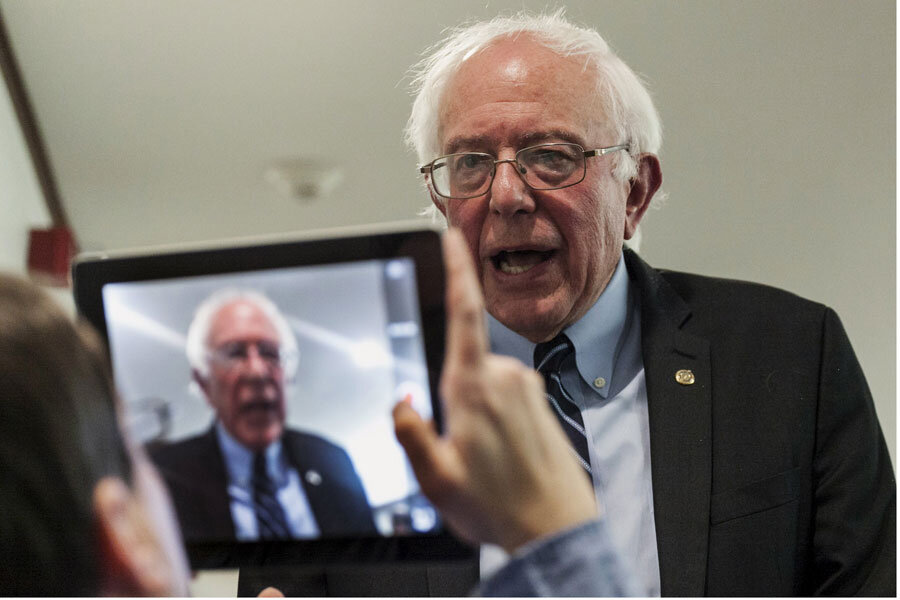Bernie Sanders joins Snapchat: Will the app shape the election?
Loading...
Democratic presidential candidate Sen. Bernie Sanders has joined Snapchat, but he has one important question:
Forbes estimates there are 50 million Snapchat users, the median age being 18, and presidential candidates have been quick to take advantage of reaching the young audience.
Republican presidential candidate and Ohio Gov. John Kasich and former candidate Wisconsin Gov. Scott Walker both released ads on the app, while former Secretary of State Hillary Clinton made a comically awkward debut this summer.
It’s an especially strategic move for Senator Sanders who, at 74 years old, would be the oldest candidate to win a presidential election, beating Ronald Reagan by about six years.
Snapchat has been positioning itself as a major media player for this campaign season, even poaching a seasoned CNN political reporter to lead its strategy. Its “live story” feature has enabled users to get a glimpse of rallies and debates. But will 2016 really be the Snapchat election?
In August, Wired’s Issie Lapowsky reported on the app’s political foray with caution, noting that it’s not clear whether campaigns could effectively target and mobilize potential voters on the service like they can with Facebook or Twitter:
On the surface, having a presence on Snapchat makes these candidates appear forward-thinking and committed to connecting with millennials, Snapchat’s core demographic. And yet, even as candidates and their young teams play with the platform, behind the scenes, many of the digital teams on presidential campaigns say it’s far too early to dub 2016 the Snapchat election, as many in the media have already breathlessly claimed. Compared to other advertising platforms like Facebook, Youtube, Twitter, and most importantly, TV, they say, the ephemeral messaging app has a long way to go toward proving its worth.
Regardless of Snapchat’s efficacy as a political tool, the importance of the youth vote cannot be overstated. According to an analysis by The Center For Information and Research on Civic Learning and Engagement, crucial battleground states like Ohio, Virginia, Florida, and Pennsylvania would have turned red in 2012, and thus the presidency, had the youth vote swung right. Youth voter turnout has steadily been on the rise since the new millennium, but it dropped significantly in the last presidential election.
According to a new poll released Saturday, Mrs. Clinton still maintains a six-point lead over Sanders with primary voters age 18 to 45. Public Policy Polling found Clinton kept that lead on every subject, from national security to who won Saturday night’s debate. But Sanders does appear to be growing in favorability while Clinton is stagnating. That is a wider demographic than just young voters (often considered 18 to 24), but another recent poll by YouGov shows Clinton’s favorability among 18 to 29 year olds at four points higher than Sanders.
Nonetheless, The Guardian reports that Sanders has galvanized college students, and the candidate has the highest level of Facebook engagement on individual posts compared to all others running for president.







